Rig tour: Glen Sobel's Alice Cooper set-up
A nose around the rocker's kit
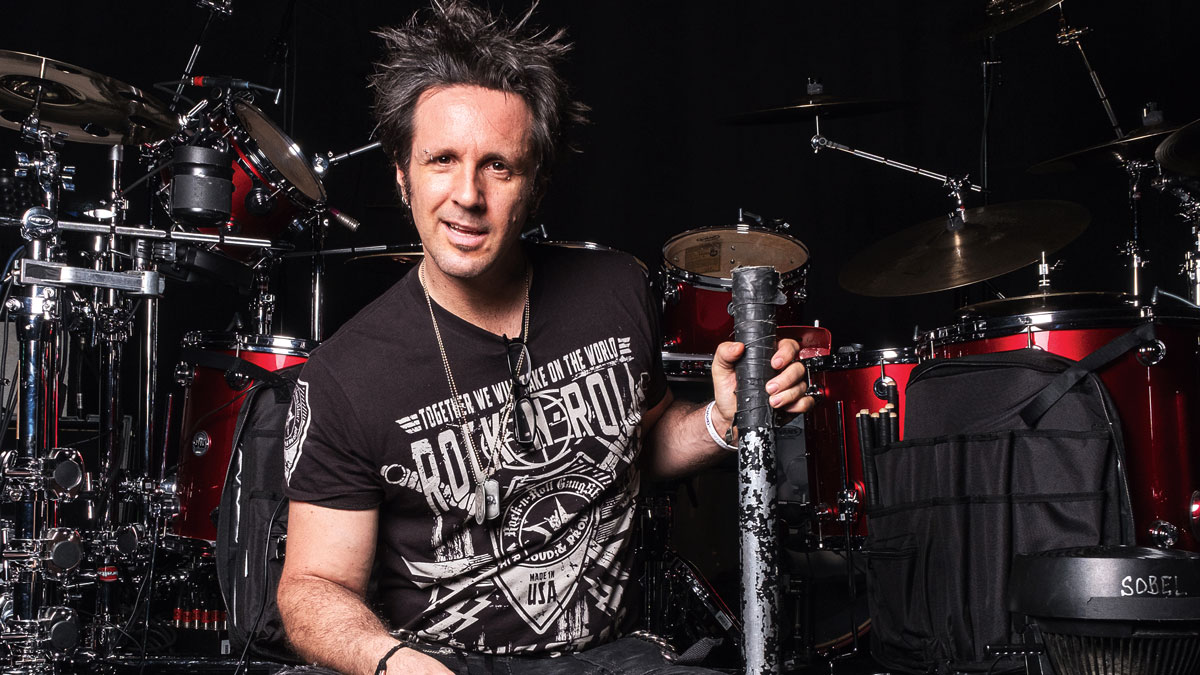
The importance of volume
The last year has been an eventful one for Glen Sobel.
The drummer was thrust into the spotlight last winter when, on literally a few hours’ notice, he filled in for Tommy Lee on a week’s worth of shows with Mötley Crüe. What made the feat even more impressive was that Sobel was still playing a full hour set with Alice Cooper on the same bill every night.
Then in January, Sobel signed with Drum Workshop. He’s been endorsing DW’s pedals and hardware for around 16 years but the time was right to start playing its drums too, as we found out when catching up with the drummer before Alice Cooper’s headline set at the Stone Free Festival in London’s O2 Arena.
Volume is very important
“There is no doubt that almost every major drum company makes great drums but there are a lot of reasons that go into that,” says Sobel about switching from Mapex to DW.
Playing arenas, stadiums and festivals with Alice Cooper, Sobel wanted a kit with a big, powerful sound and went for a maple set-up.
“Volume is very important, that’s why I wanted to get a maple kit that was loud,” he says. “There are a lot of companies that have different exotic woods, DW is one of them, I love those kits but for a hard rock act like this, you’re not necessarily re-inventing the wheel with what you’re doing. We’re playing hard rock, classic rock, and I wanted something that really represented that first and foremost.”
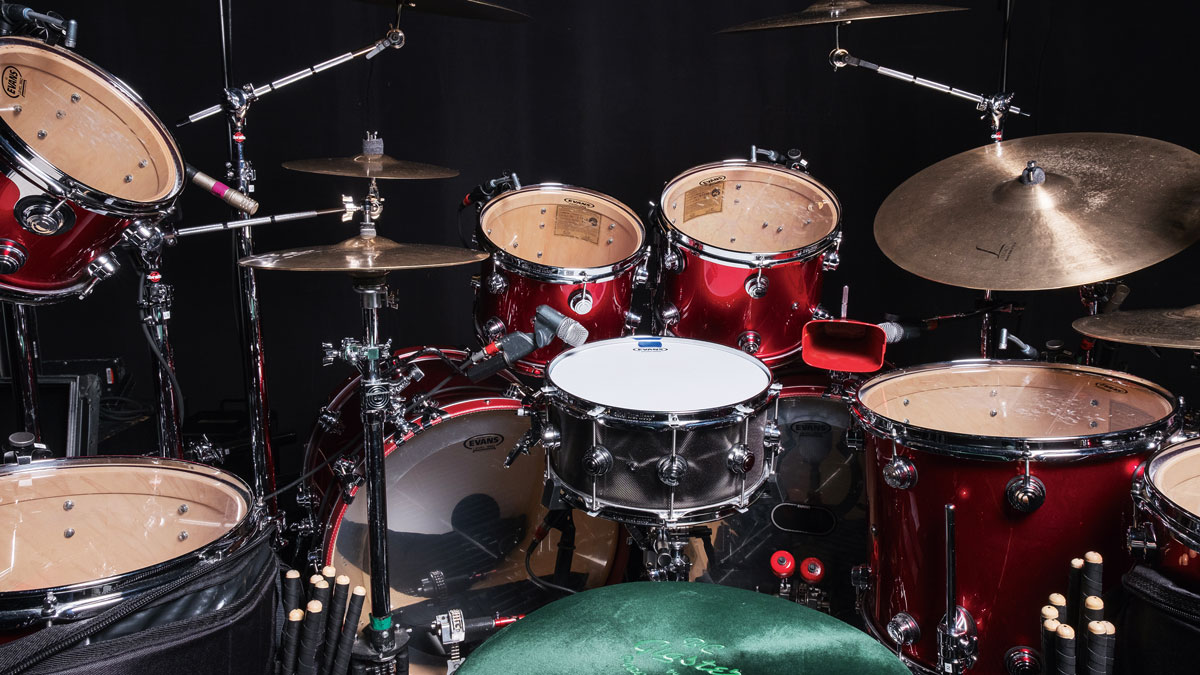
An inexact science
“I’m using Evans G2 clears on all the toms, G1 clears on the bottoms.
"The bass drum has usually been an Emad for the whole time I’ve been doing any rock gigs, or occasionally an EQ3 or EQ4. I never got into tuning exact notes, but it’s just got to sound ear-pleasing under the microphone. That’s what is necessary. Nobody has ever brought up anything, either in the studio or live, about tuning the toms to notes. In fact, I don’t know if I’ve ever had anybody request that on any gig.
“If you’re playing a drum and playing it relatively hard it’s going to go out of tune pretty quick. It’s not a definite science, tuning a drum to a specific note. They have gauges for that, but my drum tech, I’ve got one of the best guys in the business, he’s never used one of those gauges that figures out the pitch.”
If you’re playing a drum and playing it relatively hard it’s going to go out of tune pretty quick.
“For this gig we’ve been using the 14"x6.5" Knurled steel snare. That is a loud drum. Knurled is the texture in the steel. Like cymbal boom arms have that rough texture so they stay locked in there, that’s the texture on the drum.
“I have a Knurled Brass which is great, I’ve used that a little on this gig, but the Knurled steel is what we keep coming back to with an Evans ST coated head. You have to do a lot of experimenting, which snare and which head combination. It needs to have that loose, ’70s vibe but this snare does provide enough crack.
“I’m playing a rim-shot on just about every hit, unless it’s a crescendo or grace notes, so the rim-shot is going to provide the high end, the definition that you’re going to need and then the drum has got some depth and some volume to it. It covers all those sonic territories.
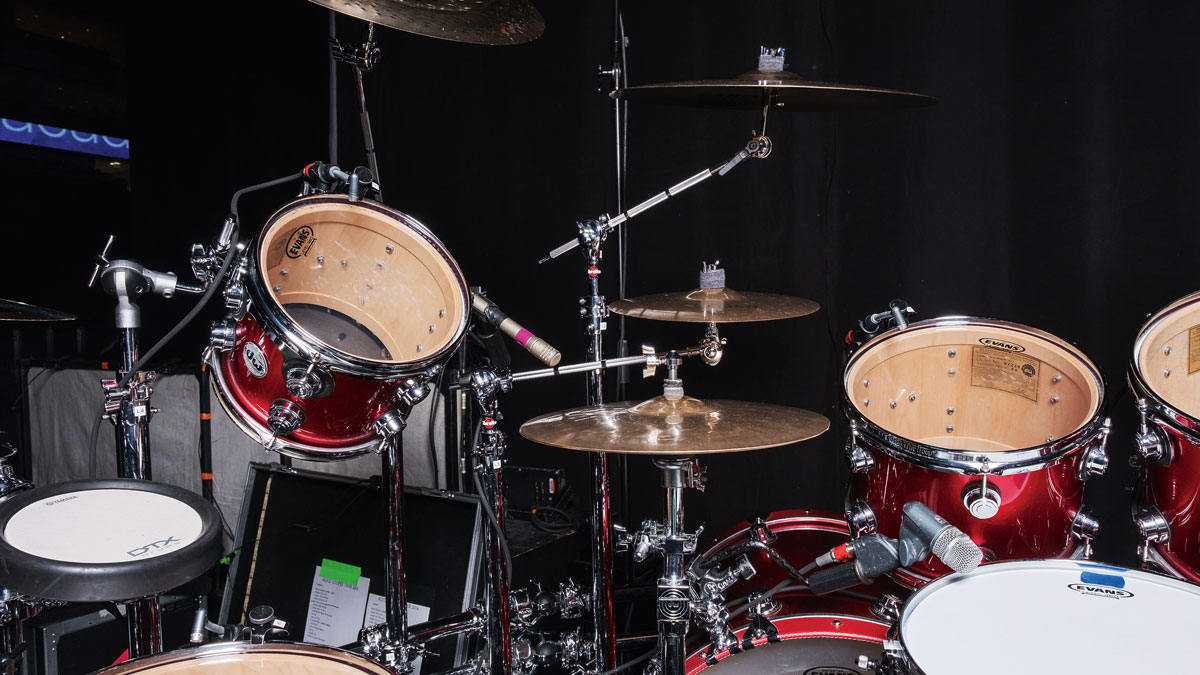
The flying tom
“The flying 10" tom is one of the drums that gets hit the least in the whole kit, but the 10" is there for those fills that need that spread. In the ballad, Only Women Bleed, there are a few of those dramatic tom fills.
“That was something that Bob Ezrin said in the beginning. He was producing the show, he was the one that suggested bringing me into the gig. I’d done a recording session back in 2010 for Alice and Bob produced it, that’s how I first got in the circle, and I was figuring out what the set-up was going to be when I started the gig, and I didn’t have the 10" at first.
“Bob said, ‘No, you need more toms! You need more dramatic drum fills,’ so the 10" got added and that actually made that spread much more complete, from 10" down to the 18".”
Expensive music stand
“It’s just something I’ve gotten used to over the years,” says Sobel about the 14"x14" floor tom on his left side.
“It’s usually on gigs that are more on the fusion side or drum clinics. It’s not used terribly a lot on this gig, in fact sometimes I put my cheat sheets on it. When we first started the tour we only had a few days to rehearse, to put together a whole new production where we were doing maybe half new songs and songs we hadn’t done in a while.
“There are always arrangement changes, you’re trying to figure out the timing for gags and props, so I’ve got to have a cheat sheet for every song. ‘Oh, we’re adding four bars to that outro, okay, let me notate that so I don’t forget it when we rehearse.’ And I even had it there for the first few shows because we were still making changes as the tour was underway. Alice’s wife Cheryl is in the show and during one song she needed a little more time to do a costume change for the next song, so that third verse that we had taken out, we had to put that back in. That floor tom becomes a real expensive music stand.”
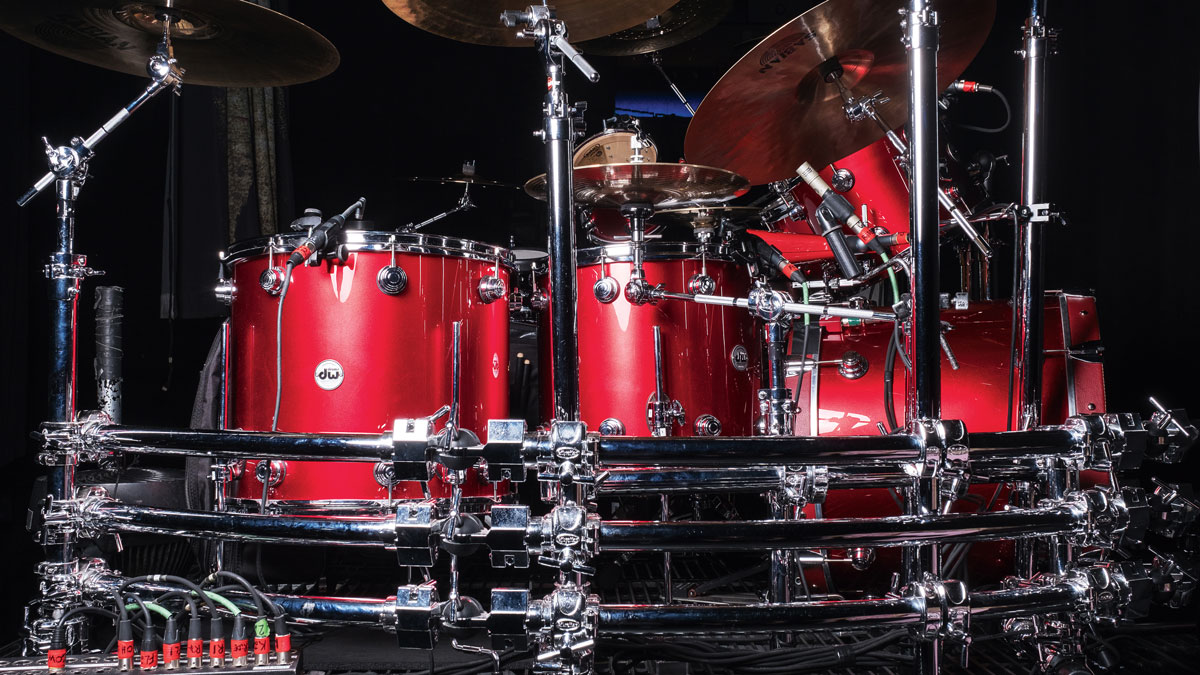
On the rack
“I’ve been with Gibraltar a few years. DW owns them now, that’s all in the same location, which is another advantage.
“We had the custom spider rack for four years. Now Michael, my drum tech, had an idea for this circular rack. There are 94 memory locks on that thing, everything is in the same exact place every time, it’s really not a problem to set up.
“This type of gig gives you the chance to do a statement with the set-up and the rack, but it’s got to be playable. When we first did a custom rack back in 2012, Michael and Brent Barnett from Gibraltar, he’s the head rack builder, we took the whole kit, set it up with stands, put all the cymbals on, measured how high each one is from the ground. It was one long day with the pipe cutters. It’s tedious but it’s rewarding when you finish.”
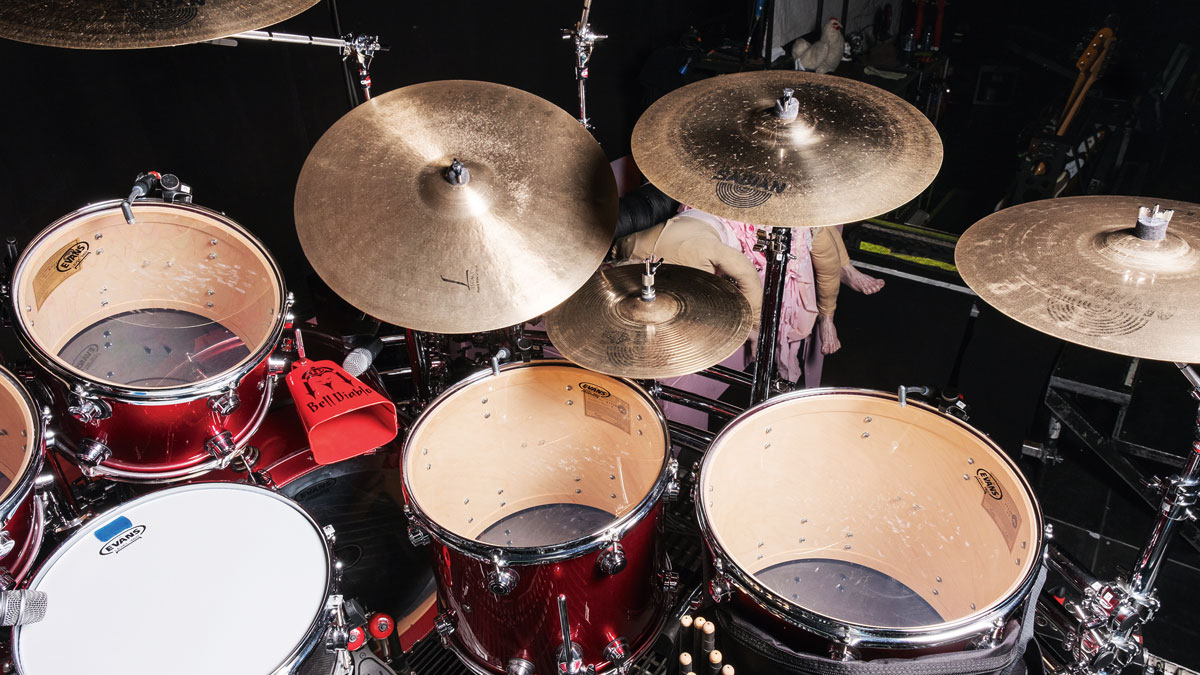
A hat for every occasion
“The main hats are the Sabian 15" HHX Power hats. They’re fat sounding hi-hats but they’ve got a lot of stick definition, which I really love.
“I can play with a sloshy, wide open sound but when we’re doing something like Feed my Frankenstein with a 16th-note hi-hat groove, I’m able to throw in some double strokes on the hats and I’m telling you, even in an arena gig, you hear every little thing on the hats.
“On the right side of those are 14" static, closed hi-hats. I’m using that a little more on this tour. We’ve been doing a tribute to Alice’s friends that are not with us anymore, sometimes we do Suffragette city by David Bowie and I use the second hats on the straight eighth notes in the verses.
“Sometimes we do a tribute to Lemmy, Ace of Spades, and there are a couple of places where there’s closed hats and double bass.”
Wash that ride
“You need to have a ride that you can get some good wash out of. The 22" Legacy ride is perfect for that.
“I’ve taught for years and I’ll turn students on to the idea of playing the ride cymbal with more of the shoulder of the stick to give it more of a white noise sound and it fills up the sound of the band even more.
“It will make the guitars sound better, it will make everybody want to play in a loud, good fashion because if you’re just playing with the tip of the stick, it’s too wimpy-sounding.
“Most of the time it’s the shoulder of the stick or it’s splitting the difference where you’re playing the shoulder of the stick on the downbeat, the tip of the stick on the upbeat. There are all those dynamic levels with the ride. It’s subtle but it actually has a lot to do with the overall dynamics of the kit and the band for that matter.”